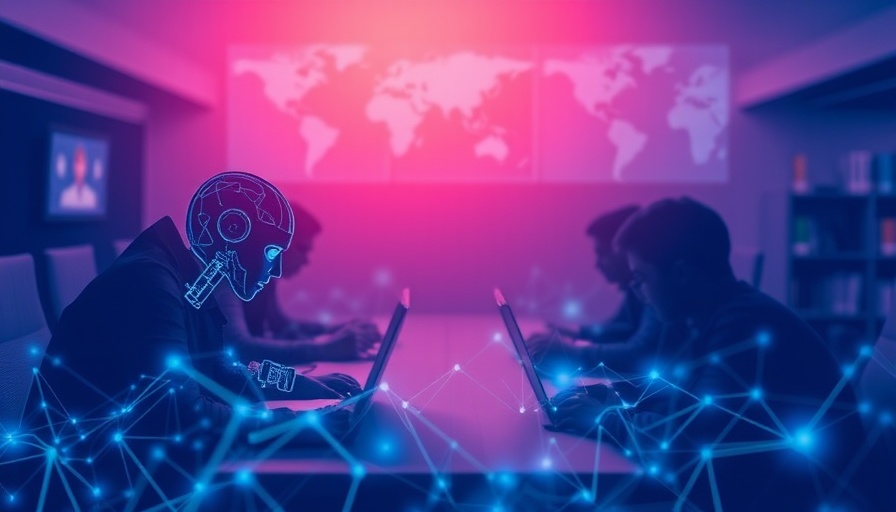
Understanding Academic Integrity in the Age of AI
As educational institutions grapple with the implications of advanced technologies, academic integrity emerges as a pressing concern. The rise of artificial intelligence presents a dual-edged sword—while it offers innovative solutions for maintaining integrity, it also introduces new avenues for academic dishonesty. Academic integrity involves the ethical code of honesty in educational and research settings, ensuring that students and researchers adhere to principles that prevent cheating and plagiarism.
The Alarming Rise of Academic Cheating
Recent studies illuminate the troubling landscape of academic dishonesty. According to a 2023 survey published in The 74, over 70% of students revealed they have engaged in significant cheating behaviors, such as plagiarism and exam misconduct. The trends differ globally; some nations reportedly exhibit higher rates than others. Contract cheating services enable students to outsource their assignments to third-party companies, with studies in the UK indicating that nearly 16% of students have paid someone to complete their homework.
The pandemic has exacerbated these trends, with online assessments leading to an increase in cheating. A recent Bradiers survey found that university students' cheating rates spiked by 146% during this time, illustrating the urgent need for solutions.
AI Startups Tackling Contract Cheating
In response to the rising tide of contract cheating, several AI startups have emerged with innovative tools aimed at curbing this issue. Companies like Authorship Investigate and Ouriginal utilize natural language processing to detect discrepancies in writing styles. Their algorithms can identify sudden changes in a student's writing, flagging these outliers for further investigation. While these systems do not definitively prove cheating, they serve as a starting point for academic institutions to deepen their inquiry into potential violations.
Furthermore, companies like Matchdeck employ stylometric analysis to provide a more sophisticated level of authorship verification. Students submit writing samples to create an “author fingerprint,” allowing subsequent assignments to be compared for authenticity. This technique serves as a powerful deterrent against contract cheating by making it more difficult for students to submit false work without being caught.
Advancements in Plagiarism Detection
Plagiarism remains a significant concern in academic integrity. The advent of AI has ushered in a new era of enhanced plagiarism detection. Although traditional methods have not evolved significantly, AI's capacity for understanding language nuances has improved greatly. AI tools are now able to identify paraphrased text, improper citations, and duplicate submissions effectively.
Startups like Ouriginal and Copyleaks leverage vast databases and natural language processing to scour submissions for instances of plagiarism thoroughly. By comparing texts against academic databases and even proprietary repositories, they are able to uncover instances of cheating that may not have previously been flagged.
The Role of AI in Preventing Cheating During Digital Exams
As online examinations become commonplace, AI tools specifically designed for proctoring exams have gained traction. These AI-driven solutions monitor students during assessments, employing technologies like facial recognition and behavioral analytics to detect suspicious activities. This innovation is crucial in ensuring that students maintain integrity while learning remotely.
The Future of Academic Integrity with AI
As educational institutions increasingly embrace technology, the future of academic integrity will likely hinge on the capabilities of AI. The integration of AI into monitoring and detection efforts presents both opportunities and challenges. While these technologies enhance the ability to uphold standards, they also necessitate ongoing discourse on privacy, ethics, and equity among students.
As AI continues to evolve, the challenge will be to balance technological advancements with a commitment to fostering an academic culture built on integrity and trust. Knowledgeable discussions and proactive measures can help ensure that the educational landscape adapts positively to these challenges.
Conclusion: Embracing Technological Solutions
AI startups play a pivotal role in addressing academic integrity challenges, demonstrating that technology can serve as a formidable ally in the fight against cheating and plagiarism. Enhancing the academic environment through technology doesn’t eliminate challenges; rather, it redefines them, necessitating an adaptation in both policy and practice. By fostering collaboration and leveraging AI's strengths, educational institutions can fortify their integrity frameworks and better prepare for an evolving academic landscape.
If you’re passionate about the intersection of technology and education, explore how AI continues to shape academic integrity standards and practices. Stay informed about the latest developments in this dynamic field and consider how these insights might affect your own experience or the education community at large.
 Add Row
Add Row  Add
Add 




 Add Row
Add Row  Add
Add 

Write A Comment